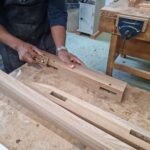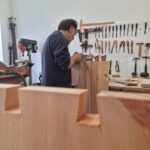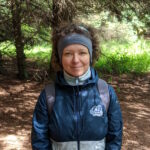My name is Jimmy Turner and I am an interdisciplinary researcher with a background in Anthropology and Gender Studies, working as a Research Fellow for the Binks Hub at the University of Edinburgh. In recent years my focus has been drawn to use of artistic and creative methods and practices, leading me to explore ways to bring my own artistic practices in woodworking into conversation with my professional activities.
The first meeting of hobby and work came in 2019 when I worked on the GlobalGRACE Project, an international collaborative project which used creative research methods—including dance, photography, creative writing, filmmaking, theatre and the visual arts—to investigate Gender Equalities with marginalised populations in Bangladesh, Brazil, Mexico, South Africa, the Philippines, and the UK.
In my own research I collaborated with Brazilian academics, NGOs and artists to collaboratively run three Artistic Residencies in Rio De Janeiro. Working with local artists we developed two exhibitions and a dance performance which explored masculinities and the ways in which they can be constructed, deconstructed, and reconstructed through art. In the first of these residencies I worked with three Brazilian co-researchers/graffiti artists to research, develop and produce an exhibition of individual and collective artworks at the Galpão Bela Maré art gallery in the Maré favela communities in Rio de Janeiro.
It was here that my research and woodworking first came together. Prior to this woodworking was a hobby and I had only made small items of furniture (which you can see on my Instagram @JimmyAnthro), but in Rio, encouraged by my artistic colleagues, I produced my first ‘true’ artwork.
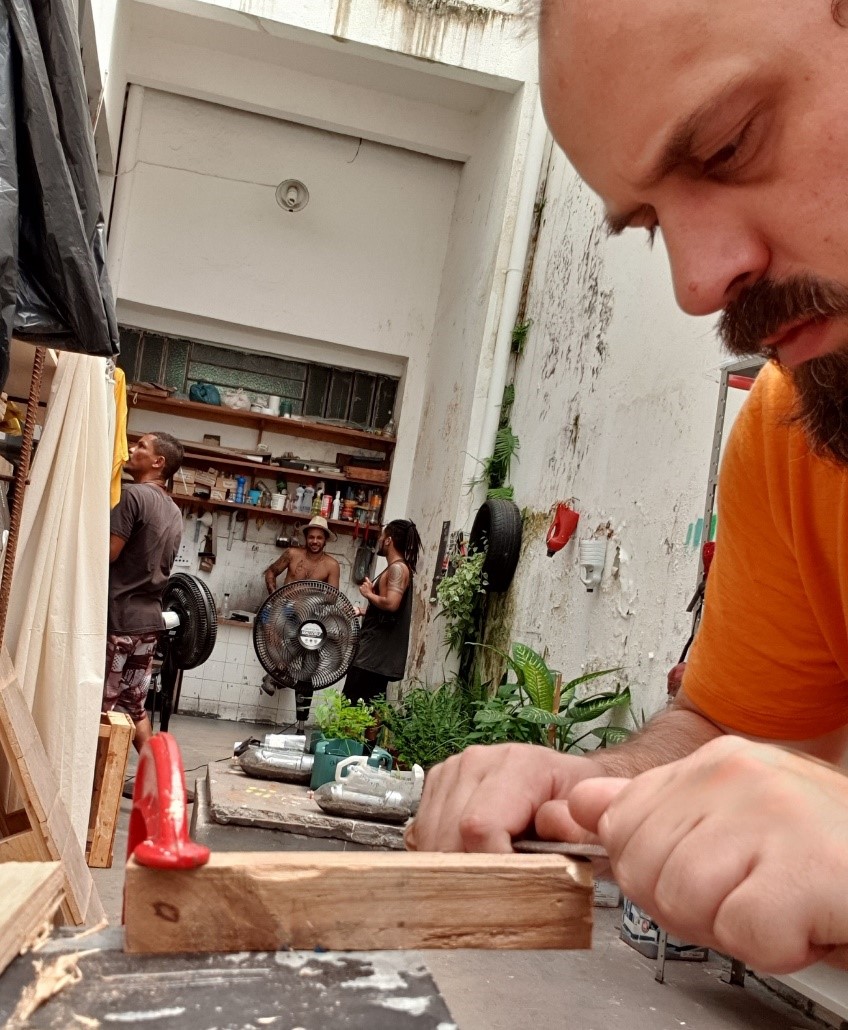
This was a botanical sculpture carved from a piece of discarded construction timber, through the making of which I explored my own relationship with masculinity. I called this sculpture Retrato dum homem possível (Portrait of a Possible Man):
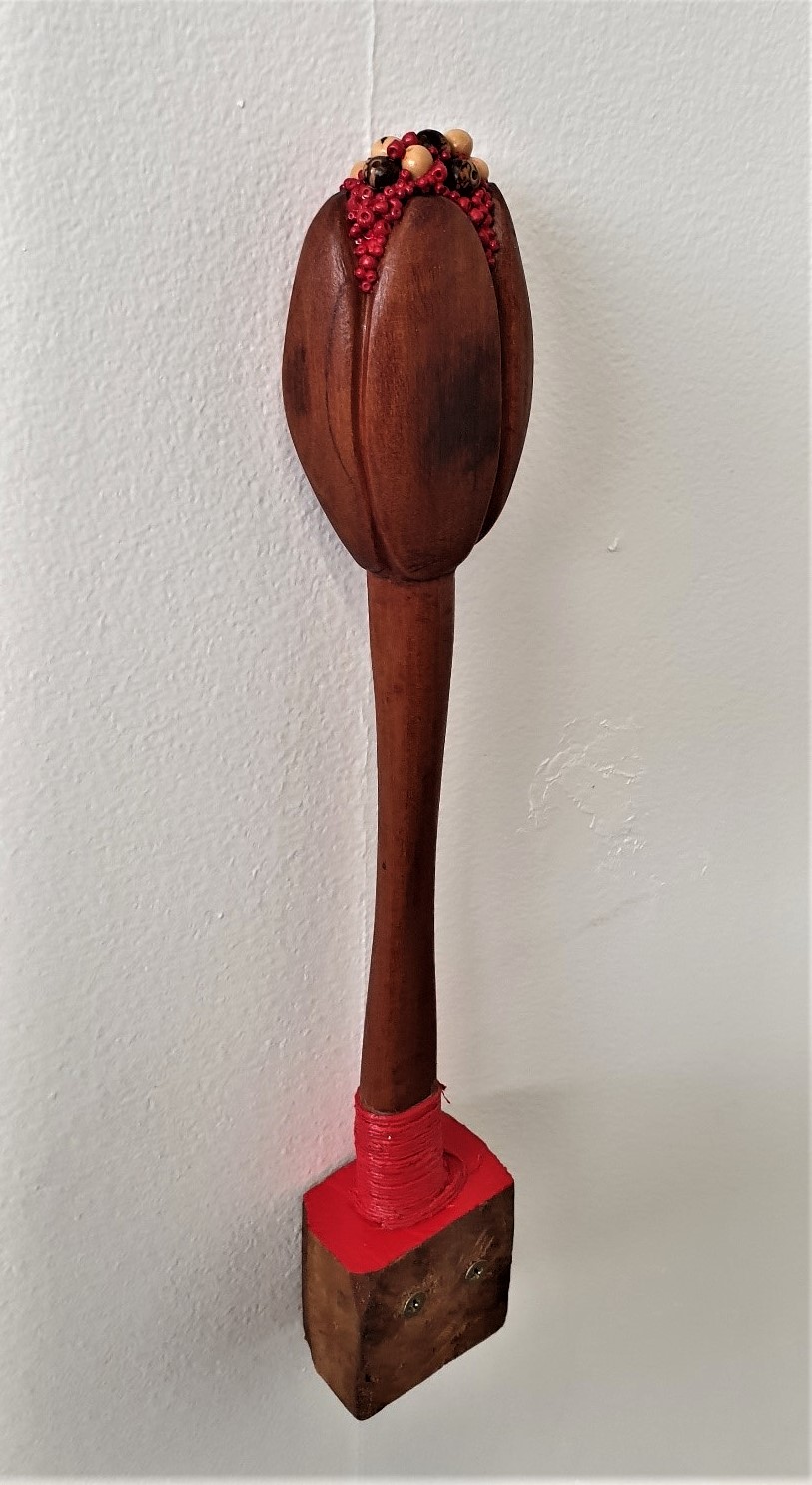
It was then exhibited in our collective exhibition ‘Masculinidades NoBela’ in November 2019:

When I moved to Edinburgh to join the Binks Hub in late 2021 one of the first meetings that I attended was chaired by colleagues from the Edinburgh Futures Institute (EFI). They briefed us on the renovation project to transform the former Royal Infirmary of Edinburgh building on Lauriston Place into the new centre for the EFI.
I was both heartened and impressed to hear from them just how central community engagement was to the vision for the EFI. They expressed how retaining the publicness of the building was a real priority, ensuring that it was a resource for the wider community. I was also glad to hear, with the climate crisis in mind, that there was a deep commitment to reusing as much of the material of the hospital as possible. I was left, however, with a sense that we might think about going a bit further still and think about a more material form of engagement with publicness.
Academic community or public engagement tends to focus on bringing the (non-academic) public to us, to meet us on our ground. This ground, the university, is commonly seen as a secular temple of the mind, and we academics as a priesthood of the public intellect. But, I wondered, what of the other aspects of publicness that academics should, I believe, work with and amongst on a daily basis? How could we increase the chances that this space where so much influential research will be planned, analysed, written about and taught would engage with publicness not only in terms of the intellect, but also the spirit and body of the public, and publicness?
This felt particularly important to me because hospitals might perhaps be the most public buildings we have. They are where lives begin and lives end, where tears are shed, both of joy and pain. So how can the academics who go on to occupy these former hospital spaces ever truly and fully continue to engage with the visceral publicness which inhabits these spaces? Does our often dispassionate mode of analysis allow for an effective engagement with the public body and spirit within these spaces? What would be the cost to our research if we failed to do so? Ultimately, if we were to settle into our new building lacking this kind of engagement, could our research ever be truly public?
A few days later I cautiously sent a proposal to these same EFI colleagues suggesting that we find a way to construct an artwork from some of the otherwise unusable and unrecyclable materials being pulled from the building. In doing so, I suggested, we might find a way to engage with the spirits of the people who were born, died, recovered, worked and, in myriad other ways, existed within this building in its previous life.
If, I reasoned, we could find a way to help the researchers who would work in the building to engage, or I might say commune, with the public spirit imbued into it by the NHS, then we would surely be better researchers and better primed to engage with the publics of today, and the future.
Colleagues in the EFI were enthusiastic about the idea, and two, Jennifer Williams and Gintare Kulyte, have joined me over the last several months to develop and plan the project. We decided to approach this not as a research project (at least not as typically understood), but instead to be driven artistically. We reasoned that the spirit, however it is conceived of, is best communed with imaginatively and creatively.
Jen picks up the story in her post entitled ‘Attending To That Which Might Be Lost’, where she introduces the development of the concept for the project which we developed with Gintare, and explains how we selected the partners we approached to work with us.
I will then, in my next post, follow that with a description of the materially-focus design process that I used to develop the initial vision for the installation that we will collectively make over the next six months. If all goes according to plan this installation will then artistically and materially represent the spirits of care, protection, and public-mindedness that make a hospital a hospital, and this manifestation of the spirit publicness will, we hope, engage and inspire the researchers and partners of the EFI to ensure that whatever visions of the future we conjure through our research will be grounded in an engagement with the publics without whom our new workplace could not exist.

